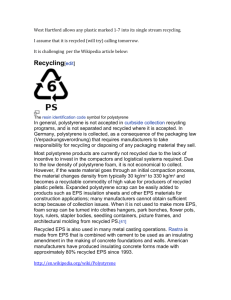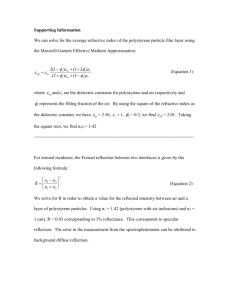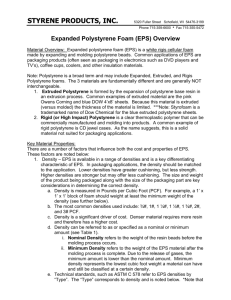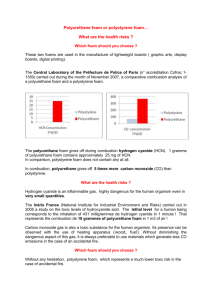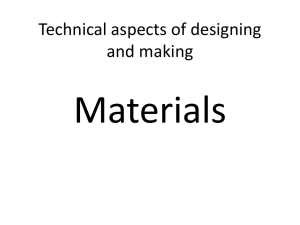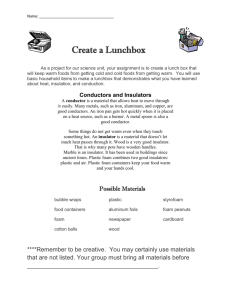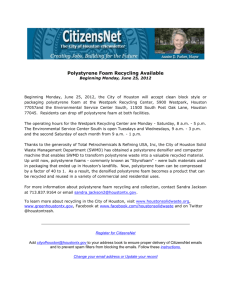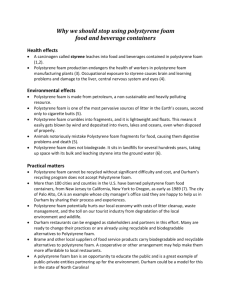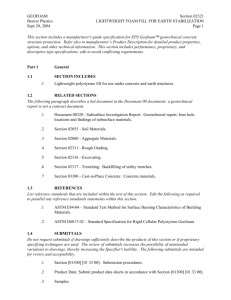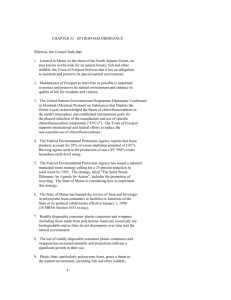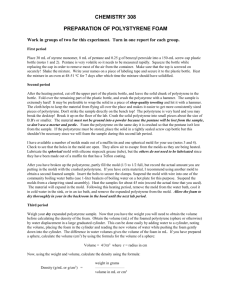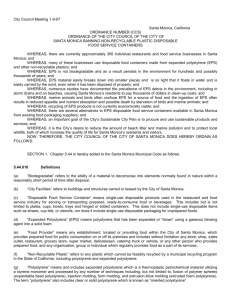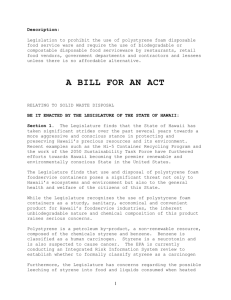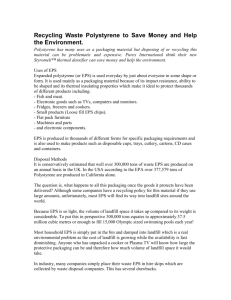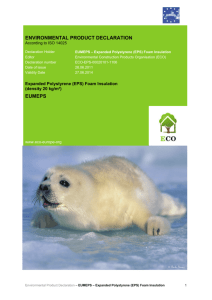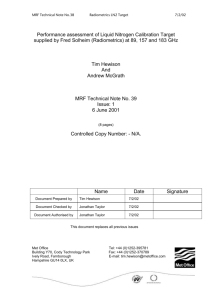Polystyrene Fact Sheet
advertisement
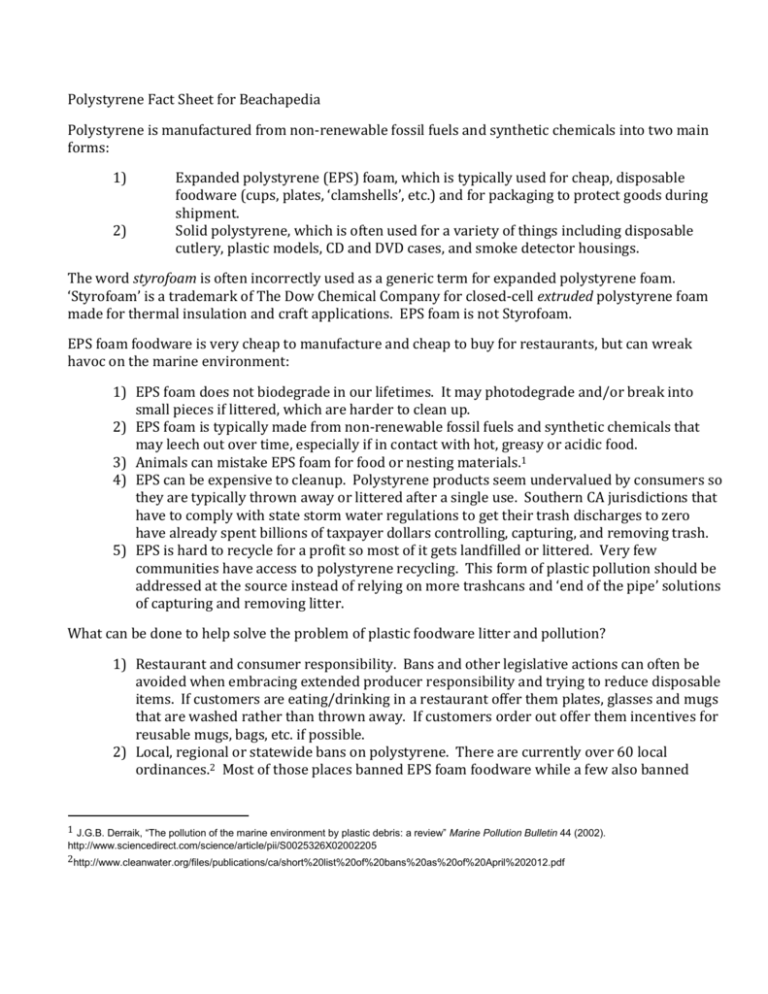
Polystyrene Fact Sheet for Beachapedia Polystyrene is manufactured from non-renewable fossil fuels and synthetic chemicals into two main forms: 1) 2) Expanded polystyrene (EPS) foam, which is typically used for cheap, disposable foodware (cups, plates, ‘clamshells’, etc.) and for packaging to protect goods during shipment. Solid polystyrene, which is often used for a variety of things including disposable cutlery, plastic models, CD and DVD cases, and smoke detector housings. The word styrofoam is often incorrectly used as a generic term for expanded polystyrene foam. ‘Styrofoam’ is a trademark of The Dow Chemical Company for closed-cell extruded polystyrene foam made for thermal insulation and craft applications. EPS foam is not Styrofoam. EPS foam foodware is very cheap to manufacture and cheap to buy for restaurants, but can wreak havoc on the marine environment: 1) EPS foam does not biodegrade in our lifetimes. It may photodegrade and/or break into small pieces if littered, which are harder to clean up. 2) EPS foam is typically made from non-renewable fossil fuels and synthetic chemicals that may leech out over time, especially if in contact with hot, greasy or acidic food. 3) Animals can mistake EPS foam for food or nesting materials.1 4) EPS can be expensive to cleanup. Polystyrene products seem undervalued by consumers so they are typically thrown away or littered after a single use. Southern CA jurisdictions that have to comply with state storm water regulations to get their trash discharges to zero have already spent billions of taxpayer dollars controlling, capturing, and removing trash. 5) EPS is hard to recycle for a profit so most of it gets landfilled or littered. Very few communities have access to polystyrene recycling. This form of plastic pollution should be addressed at the source instead of relying on more trashcans and ‘end of the pipe’ solutions of capturing and removing litter. What can be done to help solve the problem of plastic foodware litter and pollution? 1) Restaurant and consumer responsibility. Bans and other legislative actions can often be avoided when embracing extended producer responsibility and trying to reduce disposable items. If customers are eating/drinking in a restaurant offer them plates, glasses and mugs that are washed rather than thrown away. If customers order out offer them incentives for reusable mugs, bags, etc. if possible. 2) Local, regional or statewide bans on polystyrene. There are currently over 60 local ordinances.2 Most of those places banned EPS foam foodware while a few also banned 1 J.G.B. Derraik, “The pollution of the marine environment by plastic debris: a review” Marine Pollution Bulletin 44 (2002). http://www.sciencedirect.com/science/article/pii/S0025326X02002205 2http://www.cleanwater.org/files/publications/ca/short%20list%20of%20bans%20as%20of%20April%202012.pdf solid polystyrene foodware. Some places are also looking into banning foam coolers and other items because of their impacts. What are the alternatives to EPS foam and other disposable plastic foodware? 1) Reusable items whenever possible. 2) Disposable items that are compostable or easier to recycle. A variety of options exist at prices that are getting competitive with polystyrene. There are issues with any singleuse/disposable product so do your research and decide what works for you.
